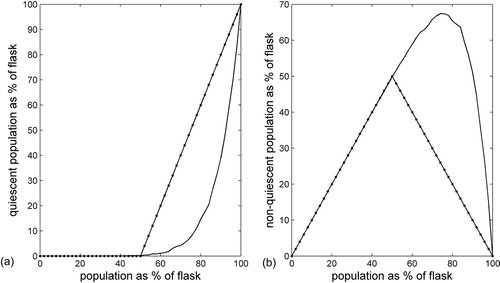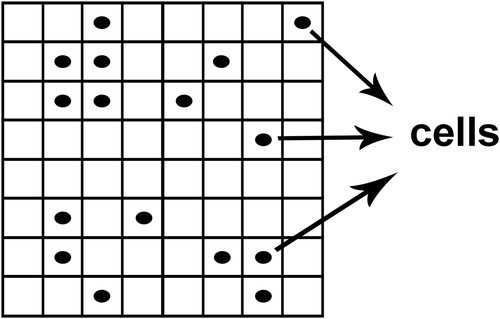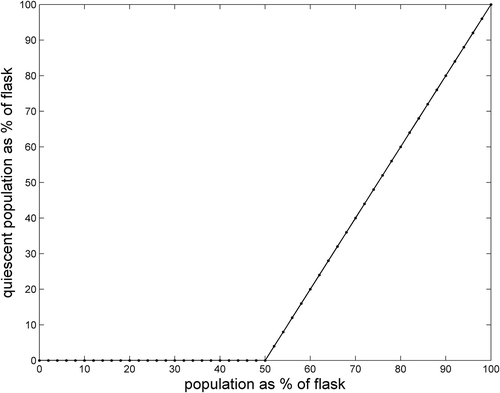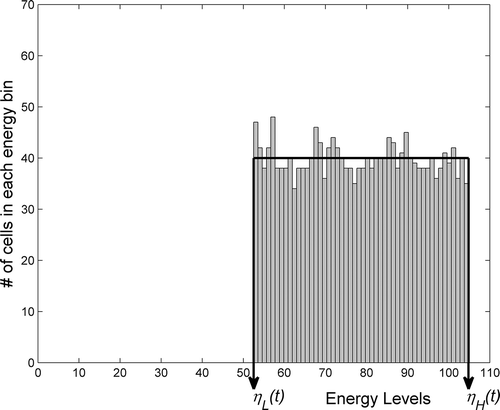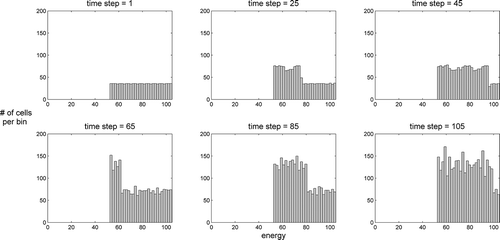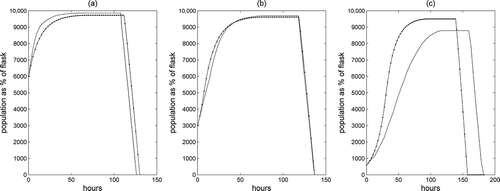Figures & data
Figure 3. Meso-scale simulation results showing average toxicity , its approximate lower bound
and upper bound
.
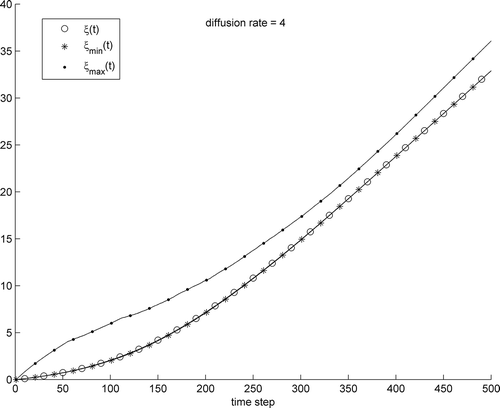
Figure 5. (a) Fraction of cells that will undergo mitotic division within the next dt for
; (b) Fraction of cells
that will die within the next dt for
.
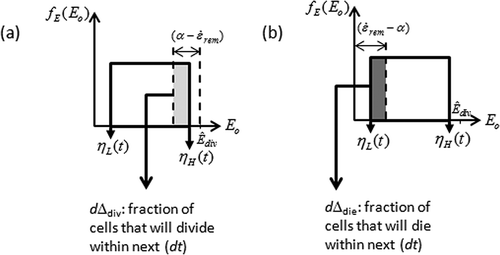
Figure 6. Time profile of (a) the population size , (b) the total toxicity
, (c) the upper boundary of energy distribution
and (d) the lower boundary of energy distribution
. These results are obtained for an initial population occupying 40% of the flask. (Meso-scale: ––, macro-scale approximation: –•–).

Figure 7. The performance criteria which evaluate how well the macro-scale model results (with ) resemble the meso-scale model results: (a)
, (b)
c)
and d)
as a function of initial occupation percentage of the flask.
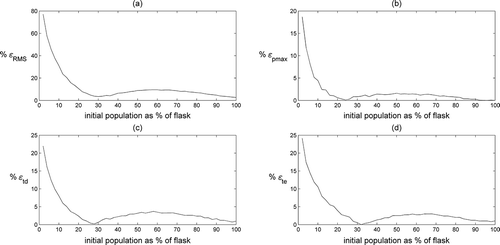
Figure 8. (a) Quiescent population size versus
, (b) active population size (
) versus
, where all are expressed as percentage of the flask. (Meso-scale: ––, macro-scale approximation: –•–).
